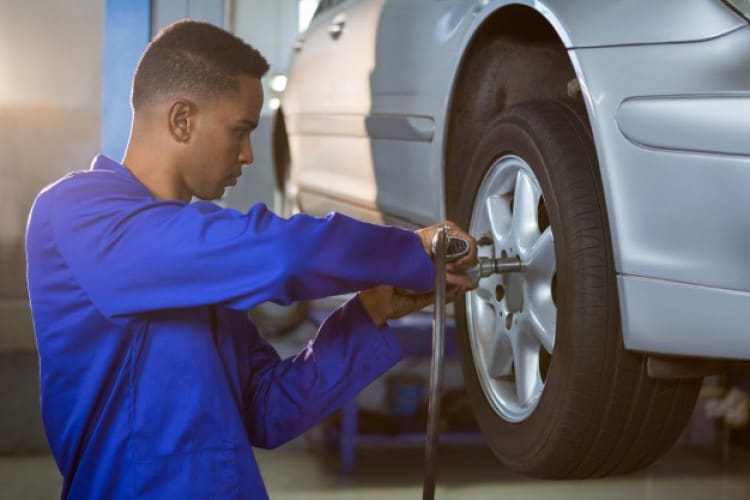
Tires are not only an important mobility feature on your car but also a critical safety component as well. If your tires fail you, you might end up in an accident. If your tires are in bad shape, they might explode, which can be bad if you are driving at high speed. This is why it is crucial to check for any damages on your tires from time to time.
Checking your tires’ shouldn’t take you much time, as long as you know where to look at; in fact it could be done while you are fueling your car. Now and then a bit of a more extensive examination done by a professional is also needed to ensure it’s still capable of delivering optimal performance down the road
While tires’ structure is seemingly straightforward and simple, they actually have a lot of features you need to keep a close eye to.
The first one is the tread. This part refers to the rubber that actually makes contact with the road or the ground. As you can observe throughout the years of driving, your tires’ tread wears off, thus limiting its efficiency in providing traction.
Therefore, you need to check the depth of the tread which should be at least 4mm. If you have a lower tread depth than the 4mm, you need to buy new tires. Low tread depth impacts the grip and the stability of your vehicle when you drive, making it more likely for you to skid when making turns or switching lanes.
Your braking distance will also increase making you a more dangerous driver to others as well as to yourself. Many studies suggest that when your tread depth is below 3mm, your stopping distance will start to rise significantly.
If your tread depth is only at 1.6mm, according to British Rubber Manufacturers Association and MIRA, your braking distance will increase by 44.6 percent on smooth concrete and 38.6 percent on hot rolled asphalt. Considering that the normal braking distance for a car traveling at 70 km/h is 27 meters, the same car traveling on asphalt road at the same speed with a worn off tire tread will have a braking distance of 101.22 meters – enough for the vehicle to crash to another vehicle and cause fatal injuries on a busy road.
There is also a financial benefit to checking your tires regularly. Aside from inspecting your tires’ tread depth, the more obvious aspect you should always check is your tire pressure. Driving your car when it is under-inflated will cause it to wear off much quicker than you anticipated. Even if it’s high-quality all-weather tire, which is engineered to be driven all year round, it will suffer irreversible damage which may even put your safety at risk when it’s not inflated with the correct pressure.
However, even with correct tire pressure, it’s also worth noting that there are several factors that can still make your tire under inflated (or over inflated). If you have a massive weight in your car’s trunk, your tire will be squished downward which will decrease its air volume and increase its pressure. The effect of weight in your car’s tire pressure, though, should be minimal, as long as it’s made of high-quality rubber and its side walls are still structurally sound and free from any prominent cracks or lacerations.
Aside from that, the temperature will also affect tire pressure. If you fail to check your tires during summer when the roads are baking hot, they may unexpectedly explode due to too much tire pressure, cracking sidewalls, or combination of both.
Also, it’s extremely important to check your tire for there might be some leakage from your valves. When your tire is losing pressure, it can lead to high rolling resistance which will result in higher fuel consumption for the same distance. With the high gasoline prices that we are currently experiencing, this can quickly translate into high fuel bills. So check also your tire pressure before you hit the road, especially if you will be traveling long distances.
Regular maintenance of your tires during every stop at the gasoline station can save you a lot of money. Start by doing a visual check of your tires and then continue to fill up the tires with air if needed. It is not necessary to check the tread depth at every stop unless you are getting close to the 4mm depth. However, if you notice uneven wear on the tires, you should consult a service station to find out the cause for this. Tires should also have worn evenly between the tires so that you can change all four tires at once.
In addition to the checklist above, if you have winter tires, it is also important to check the studs if it is a studded tire. If you have lost many studs, you should try to find out the cause for this. Aggressive driving behavior tends to cause this and also wrong rotation of the tires so that the direction of the wheel changes.
